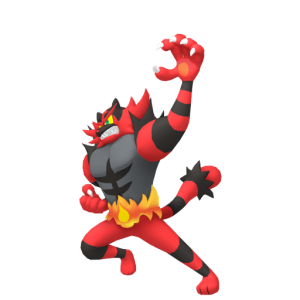VGC20: A Look at Series 3 Additions
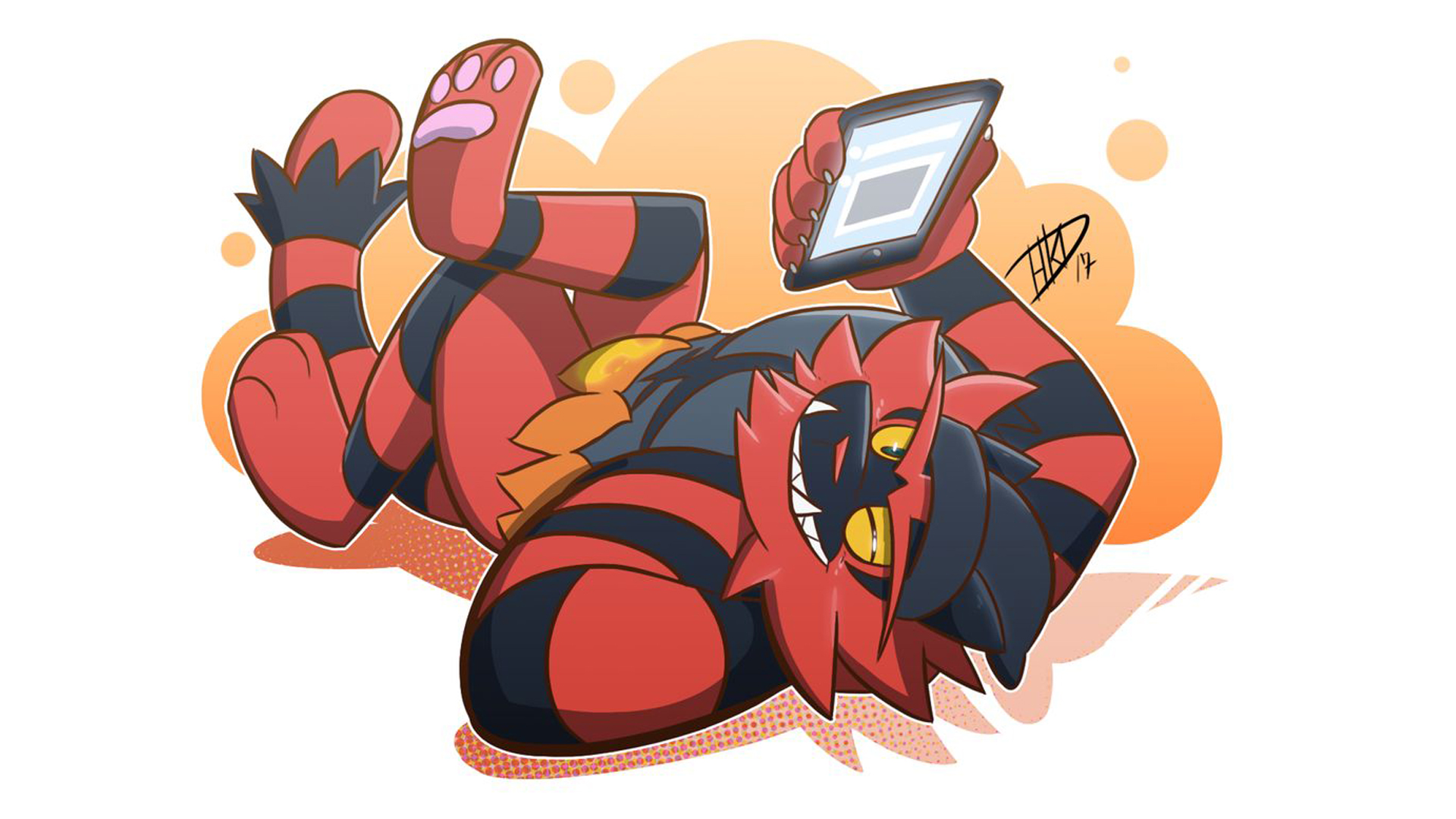
Due to the release of Pokémon HOME, series 3 is inarguably the most impactful change to the VGC20 ruleset we’ve seen yet. How have these new additions shaped the metagame? Read on to find out!
Reintroduced Pokémon
Incineroar
Somewhat infamous for its high usage and splashability in VGC19, Incineroar is back—much to the chagrin of some players. Incineroar is not entirely unchanged, however: it has received some new moves to play around with. The most notable of these is Parting Shot, which usually replaces U-turn as its favored pivoting move. Additionally, Incineroar now learns Close Combat, allowing it to potentially threaten Tyranitar (but as the average Incineroar set doesn’t have room for it, this is a considerably more niche move choice). As with many other Pokémon, it no longer has access to Knock Off.
Players who feared that Incineroar would appear on just about every team after its reintroduction to VGC need not worry: Fake Out not working on Dynamaxed Pokémon, the nerf to Incineroar’s preferred item choice of Pinch Berries, and the VGC20 meta generally not favoring the slower play promoted by Incineroar has made it much less of an auto-include on teams than some might think. The top 8 cut of the early series 3 Malmö Regionals had just two Incineroar (and a Torracat!), whereas Perth Regionals’ cut had three. Victory Road’s full usage statistics for Malmö Regionals show that Incineroar was used on 34.6% of teams in the tournament, a far cry from its sky-high usage in VGC19. That said, Incineroar proved more successful at the Chile Special Event, where it appeared on six out of eight top cut teams.
Intimidate Incineroar essentially replaced Arcanine as a support Pokémon in both VGC18 and VGC19, but this is not the case in VGC20. Arcanine’s good Speed tier and access to fast Will-O-Wisp, Snarl, and even Safeguard all ensure it still has a place in the VGC20 meta. It is perhaps worth noting that Incineroar is especially awkward to use with the commonly-seen Sand duo of Tyranitar and Excadrill, due to sharing their weaknesses to Fighting, Water, and Ground. Teams making use of the core may decide to use a different Intimidate Pokémon for that reason.
Although Parting Shot seems like a no-brainer inclusion on the usual Incineroar set, it has its downsides. Using U-turn instead would allow Incineroar to run Assault Vest, which one might argue is a better item choice with the Pinch Berry nerf. Further, opposing Incineroar can potentially use Throat Chop to block Parting Shot, which can be an especially frustrating possibility in situations where players don’t know who’s Incineroar is faster.
Using Torracat over Incineroar may strike some as a bit of a silly choice, but the addition of Parting Shot to its repertoire means its greater base Speed stat of 90 is more valuable than in previous formats, as you generally want to Parting Shot opposing Pokémon before they get a chance to move. Torracat can also use U-turn to proc Weakness Policy on partner Pokémon such as Tyranitar without having to worry about underspeeding it. Unlike Incineroar, however, Torracat does not learn Snarl.
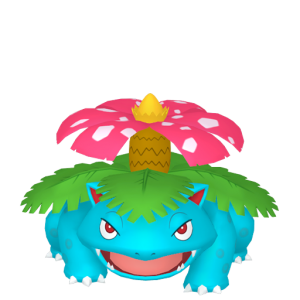
Venusaur
Venusaur is best compared to its fellow Grass/Poison-type with access to Sleep Powder, Roserade: stat-wise, Roserade has greater Speed and Special Attack, whereas Venusaur has better bulk. In previous formats, Venusaur was most known for abusing Chlorophyll under Sun, allowing it to Sleep even very speedy threats with the proper weather support, granting it an edge over Roserade (which has rather unremarkable Abilities). Something else Venusaur has over Roserade is a wider movepool: Earth Power and, potentially, Weather Ball grant it solid coverage. Still, players using a team with no way to set Sun and planning to simply use a Sash set with STABs, Sleep Powder, and Protect may be better off using Roserade than Venusaur.
Venusaur’s strength lies in its flexibility: its decent bulk and good coverage options means it is a perfectly reasonable Dynamax choice, which forces opponents to guess whether it will go for Sleep Powder or simply Dynamax and starting boosting itself and its partner with Max Ooze—or maybe even go for a Max Overgrowth straight off the bat! This flexibility also means it can better utilize items other than Sash, such as Life Orb. Some more unusual, yet usable, choices include Weakness Policy or even Assault Vest.
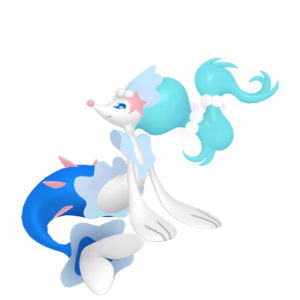
Primarina
Primarina never saw much play in earlier formats due to Tapu Fini being considered a generally superior Water/Fairy type, but as the lone Pokémon with its typing in VGC20, it has finally carved out a niche for itself. Dynamax helps Primarina considerably, ensuring it can get off more than just one attack despite its poor base 60 Speed and allowing it to utilize its excellent Special Attack to its full potential. Korean player Suwoong Cheong notably used an Expert Belt Primarina to get to #1 on the Showdown Ladder.
Liquid Voice giving Primarina a reliable spread Water-type move outside of Dynamax in Hyper Voice gives its Hidden Ability some use, and Energy Ball helps it against opposing Water-types (naturally, it threatens Gastrodon more so than others). Finally, Perish Song is always an interesting option.
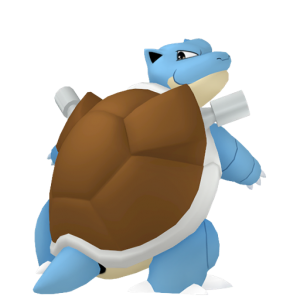
Others
Blastoise now has Shell Smash, allowing it to go for the gimmicky, yet scary-to-the-unprepared combo of Shell Smash into Water Spout. Of course, this generally requires some form of redirection support. Decidueye no longer has access to Tailwind and is still a rather underwhelming Pokémon from a competitive standpoint, though a Weakness Policy set alongside a Shadow Sneak user is always an option. Galarian Slowpoke is mostly a meme pick, able to set up Trick Room, then use Surf to activate a partner Torkoal’s Weakness Policy.
Reintroduced Regional Variants
Alolan Ninetales
Alolan Ninetales saw much use in VGC17, mostly thanks to being able to set Aurora Veil. With its reintroduction to the game in series 3, Ninetales has seen considerably less use so far, largely due to Gigantamax Lapras also having the ability to set up Veil—and unlike Ninetales, it deals damage while doing it, too! However, one can make the argument that Alolan Ninetales is an underlooked support pick. Encore and Disable are less useful with the introduction of Max Moves, but Ninetales has other tricks up its sleeve.
Speed being recalculated mid-turn in Sword and Shield makes Icy Wind all the better when used by a base 109 Speed Pokémon. Its staple damage-dealing moves in Blizzard and Freeze-Dry are as potent as ever, and Ice Shard can be used to proc a Weakness Policy on partner Pokémon such as Togekiss or Dragapult. Finally, Fake Tears could very well be one of Ninetales’ scariest support options.
Pokémon such as Tyranitar or even Durant, the latter which Speed ties Ninetales and can potentially go for a Max Rockfall before it gets its Veil off, being common in the VGC20 meta undeniably hurts Alolan Ninetales. It is also well worth noting that Alolan Ninetales’ base Special Attack is a measly 81, making Vanilluxe potentially a better option for more offensive sets planning to utilize both Blizzard and Freeze-Dry (which is especially true if it’s supported by a fast Max Airstream Pokémon, such as Inteleon). Nevertheless, Ninetales has some unexplored potential.

Alolan Persian
Much like Alolan Ninetales, Alolan Persian is a Pokémon which saw good success in VGC17, but has not yet established itself as much of a threat in the VGC20 meta. Access to Fake Out, Parting Shot, and STAB Foul Play alongside an excellent base 115 Speed stat makes Alolan Persian an interesting support Pokémon. As before, it has Fur Coat to help increase its longevity against physical attackers, but the omnipresence of specially-based Fairy types such as Togekiss and Sylveon in the VGC20 meta may help explain Persian’s low usage.
If one can look past its flaws, Persian has quite a bit to offer. Fast Fake Tears is as scary as ever, but players who are not afraid of gambling on an 85% accuracy can instead elect to use Screech to support physical attackers. Other staple stat-lowering moves include Icy Wind, Snarl, or even Charm. Persian also has access to a variety of generally useful support moves such as Quash, Switcheroo, and Taunt. Further, it can use U-turn to activate a partner’s Weakness Policy, or even Beat Up if alongside a Justified Pokémon (though the STAB hinders more than it helps in the latter case). The possibilities are near-endless; a real case of four move slot syndrome!
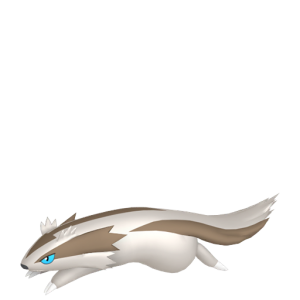
Others
While other non-Regional variants of Pokémon are generally less competitively viable than their Galarian forms, Linoone still deserves a special mention: Belly Drum with Gluttony into STAB Extreme Speed is an amusing, if not very serious or effective, strategy. However, it’s hard to deny Dynamax makes it considerably harder to pull off.
New Gigantamaxes

Lapras
Gigantamax Lapras was the most anticipated new G-Max Pokémon in series 3, and with its Ice-type G-Max Resonance having Aurora Veil as a secondary effect, it’s very easy to see why. Lapras had already seen play before series 3 for various reasons: its Water/Ice STABs are valuable (and it has the option of running Thunder to hit opposing Water types, too), Freeze-Dry hits Pokémon such as Gastrodon and Gyarados very hard, and it is also one of few Perish Song users in the format.
G-Max Lapras has one major flaw, which is its lack of offensive power. Players generally patch this up in one of two ways: they either equip it with a Weakness Policy, with some examples of common activators including Rock Tomb Dusclops or Volt Switch Raichu, or simply support it with a Decorate Alcremie. If used alongside Decorate Alcremie, as was the case with Fevzi’s Malmö team and Yoko’s Perth team, Lapras is free to use Light Clay over Weakness Policy in order to extend the duration of its Veil.
Rather unlike Incineroar, Lapras usually requires its team to be built around it. Even so, it was the third most popular Pokémon at Malmö Regionals after Togekiss and Incineroar, appearing on an impressive 30.2% of teams (with two top cut appearances to boot).
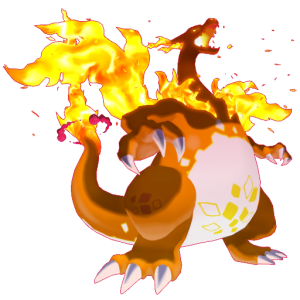
Solar Power Charizard
Aaron Traylor piloted a Blaze Gigantamax Charizard team to a win at Dallas Regionals earlier in the year, proving that, despite a seemingly inferior Ability, Charizard’s G-Max form is no slouch. G-Max Wildfire dealing 1/6 of each of the opponent’s Pokémon’s health each turn for 4 turns turned out to be a much scarier side-effect than many had anticipated. Come series 3, Gigantamax Charizard is now able to use Solar Power over Blaze. On a team with Sun support, using Solar Power G-Max Charizard seems like a no-brainer.
But what about teams without the ability to set Sun? One could very well argue that Blaze G-Max Charizard is a better choice in such situations, as Gigantamax Charizard is unable to set up its own Sun (unlike regular Charizard). Furthermore, slightly bulkier Charizard (perhaps even carrying Charti Berry) may not want Solar Power as it could throw off defensive calcs. On the flipside, Solar Power Charizard on a non-Sun team may simply be able to make use of the Sun on opposing teams, should they encounter any. Either option could very well still be viable.
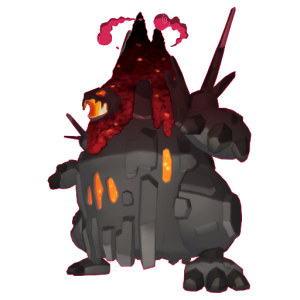
Coalossal
Gigantamax Coalossal is a clear upgrade to its non-Gigantamax form, with its G-Max Volcalith functioning exactly like a Rock-type version of Wildfire. Since Coalossal is a relatively niche pick, G-Max Volcalith can easily catch unprepared teams off-guard. The game plan is generally simple: use Surf Dragapult to proc Coalossal’s Weakness Policy and Steam Engine to greatly increase its offenses and Speed, then sweep from there (while not letting opponents target Coalossal’s quad-weaknesses to Water and Ground).
Coalossal happens to have an excellent matchup against Sun teams, an archetype some players feared going into series 3 (though it, admittedly, did not see much success at tournaments), and could even set up its own Sun for a partner Venusaur. It’s worth noting that Surf Dragapult is not a strict necessity: aDrive used Aqua Jet Inteleon as a Weakness Policy activator on his Collinsville top cut team. Yet another option could be a classic Bulldoze Dusclops, should the Coalossal user decide that the game calls for a Trick Room mode rather than a fast mode.

Hatterene
Gigantamax Hatterene’s G-Max Smite is a considerable buff, as Dynamax Hatterene is often discouraged from going for Max Starfall due to not wanting to overwrite the Psychic Terrain set by its most common partner, Indeedee. With G-Max Smite, Hatterene instead confuses both opposing Pokémon, which can cause huge swings in games if they both happen to hit themselves in confusion. This was a side-effect Malmö Regional Champion Tobias Koschitzki, who used a classic hard TR team with Gigantamax Hatterene, surely appreciated.
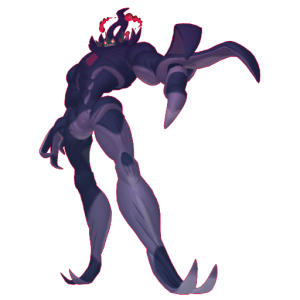
Grimmsnarl
Gigantamax Grimmsnarl caused much panic when initially announced, as players were under the impression that its G-Max Snooze gives both opposing Pokémon the drowsy status. When it was found out that the activation rate is only 50% on a single Pokémon, interest in Gigantamax Grimmsnarl quickly dropped, and so Grimmsnarl continues to play a primarily support-oriented role on a majority of teams. Still, in the rare event that a player might want to Max their Grimmsnarl, G-Max Snooze’s side effect could certainly prove helpful.
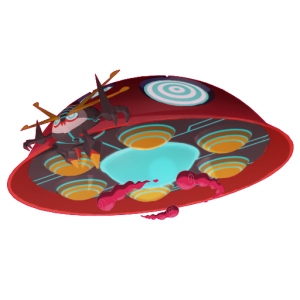
Orbeetle
Gigantamax Orbeetle’s G-Max Gravitas allows players to set Gravity, a strategy commonly employed to support Pokémon that learn Hypnosis. As a Trick Room setter, Orbeetle can also work well alongside a Copycat Pokémon; going for a Max Guard based off of Trick Room will allow the Copycat partner to set up TR while ignoring its low priority. However, Orbeetle’s base 90 Speed makes it rather fast, making it unable to properly utilize Trick Room itself. Having already been a relatively niche Pokémon before, Orbeetle is likely to stay that way even with the introduction of its Gigantamax form.

Kingler
Gigantamax Kingler’s G-Max Foam Burst, based off of its Water-type moves, has an easy-to-understand effect: it lowers the Speed of both opposing Pokémon by 2 stages. When combined with Kingler’s base 130 Attack and Hyper Cutter making it immune to Intimidate, it is able to put in more work than some might expect. Just don’t let it get hit by special attacks; even Gigantamaxed, it’s unlikely to take the hits well due to its poor 55/50 special bulk. While it is rather niche and not likely to see much play, much like Orbeetle, it can catch some unprepared players off-guard.
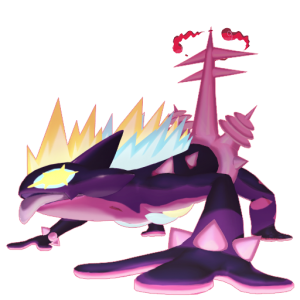
Others
Gigantamax Alcremie’s G-Max Finale functions much like Life Dew, restoring HP to both it and its partner. Unlike Life Dew, however, the amount restored is a mere 1/6 each Pokémon’s health. As Alcremie is primarily a support Pokémon, it is not likely to be Gigantamaxed often. Gigantamax Flapple’s G-Max Tartness reduces evasiveness, whereas Gigantamax Appletun’s G-Max Sweetness has an Aromatherapy-like side effect, curing status conditions—neither effect is particularly useful competitively. Finally, Gigantamax Toxtricity’s G-Max Stun Shock will either Poison or Paralyze both opposing Pokémon (the status condition is decided at random, with each being equally likely), making its G-Max Move somewhat similar to that of Gigantamax Butterfree. However, since Toxtricity mostly relies on sound-based moves, it is usually not very willing to Gigantamax, as doing so causes it to lose its Punk Rock boost.





